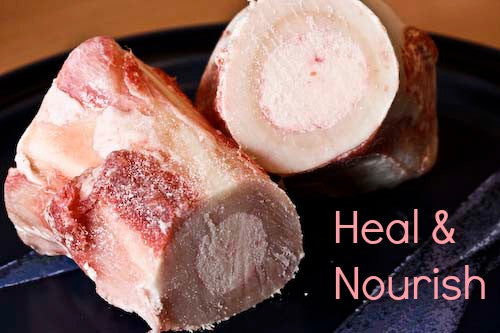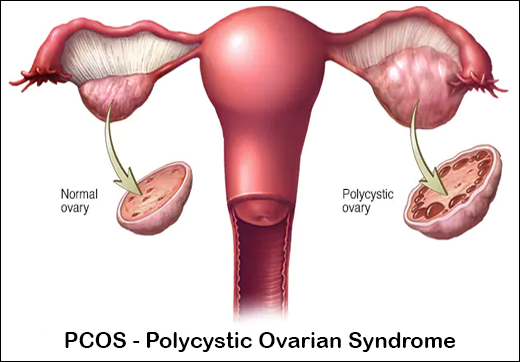photo credit: antonhealth.com
Who hasn’t heard of the healing power of bone broth or the proverbial chicken soup? Even if it was simply from your grandmother and not an licensed Naturopath or a village herbalist it’s all the same broth. Each traditional culture has had its views on how to heal the body. A recurring theme across cultures is the primacy of the digestion. We extract that which our digestion can breakdown and assimilate. We are what we can absorb. Riding the wave of an industrial food supply for several generations now the Western world is confronting the reality of what damage this “food” can do to the gut and its plethora of systemic effects. It is time to come back to an ancient method of preparing food which has nourished humans for eons.
As Hippocrates is believed to have said, “Let food be thy medicine, and medicine thy food,” or something of that nature. However, some believe that to be a misquotation. Nonetheless, Hippocrates was undoubtedly an observer of Nature and regarded food to have a considerable effect on the human body, enough as to ward off illness. Oddly, the Huffington Post’s recent article on the top 10 healing foods of the decade did not even mention bone broth. Perhaps it’s just too common – it flies under the radar.
I’ve been making bone broths for myself and my family for over a decade. Very recently (within the past 3 years) they have become the basis of my daily diet for a variety of soups centered around mainly local meat and seasonal vegetables. I was originally inspired by traditional recipes from around the world as I learned of the tremendous healing potential of this simple food. Continuing my studies as a Vitalist and furthering my appreciation for the primacy of a strong functioning digestive system I began to see the central importance of this ancient food in my family’s diet and the diets of my clients. Certainly, the Weston A. Price foundation and Sally Fallon’s writing have done a lot to introduce people to the profound healing properties of bone broth. But nearly all cultures and ethnicities, and most families, will find a tradition of cooking with bones if they look back far enough.
Bone broth batch (thisisgrub.com)
Nutrient Density First and foremost the nutrient content of a well-prepared bone broth likely exceeds that of any other food source. Given the availability of micronutrients (vitamins, minerals, amino acids) in a warm liquid solution people with impaired digestion have a fighting chance of getting their nutrients from broth. For all the hullabaloo over raw food diets in recent decades I still have concerns over whether an impaired digestion (low digestive fire) can actually absorb much of the nutrients available in the uncooked food. Whatever way you look at it, the food will need to be cooked in order to make its way into your body whether it’s cooked in a pot or in your stomach with digestive acids. I thoroughly enjoyed this debate over cooked vs. raw food between two herbalists. I’ll just say it’s entertaining and informative.
Re-building the Gut Matrix and Re-establishing the Gut-Brain Connection Once exposed to inflammatory foods the gut lining begins to atrophy causing the tight bonds which make up the gut matrix to loosen and become permeable. The term Leaky Gut has been used to refer to this condition. When this occurs various contents of the gut can begin to leak out into the bloodstream causing autoimmune reactions. The nourishing contents of bone broth help to heal the gut matrix decreasing permeability and enhancing nutrient absorption, hence a positive snow-ball effect; more nutrition -> enhanced absorption -> more nutrition -> enhanced absorption ->exponential systemic healing.
I often explain to my clients that a bone broth with added meat and vegetables has a relatively low potential for irritation and a high level of nutrition. Going on a bone broth “fast” allows one to reset the gut-brain connection while eliminating foods which produce chronic inflammation. The potential results being enhanced digestion, improved absorption and assimilation, high micronutrient density in each meal, enhanced and stabilized immune function, improved energy levels, repair of connective tissue, improvement in sleep, improved blood glucose metabolism, and stabilization of inflammatory conditions.
When making my healing bone broths I take it one step further – I add herbs. Of course, right! Each batch of bone broth is infused with a couple dozen herbs known for their micronutrient density (e.g. Nettle, Oatstraw, Irish Moss), or their regulatory effects on immunity (Chaga, Reishi, Schisandra, Astragalus), or their ability to enhance assimilation of nutrients and elimination of waste products (Red Clover, Yellow Dock, Dandelion, Burdock, Cleavers), and provide a myriad of
Wild Oregano Flowers
anti-inflammatory and antioxidant constituents (Rosemary, Thyme, Bay, Ginger, Wild Oregano). Now I know it’s REALLY packed with powerful nutrition and healing properties. If there was a “wonder-drug” of foods, I feel this is it. If I didn’t crave a greater diversity of foods I would probably live on this food exclusively for how it makes me feel. I have heard from my clients that a bone broth fast has brought them enhanced mental clarity, needed weight loss, stabilized mood, reduced sugar cravings, enhanced immunity, regulation and improvement of appetite, and a reduction in joint pain and systemic inflammation. You can find longer lists of benefits in the testaments of other bone brothistas.
Basic Bone Broth Recipe
4 lb of free range/natural/grass-fed local marrow bones
(alternatively, use knuckles, “soup” or “dog” bones, or anything else you can get your hands on)
2 gallons of clean cool water
1 cup organic apple cider vinegar
2 Tbl sea salt (you can add more to taste later)
One early morning, place everything in the pot, covered, and turn it on to medium heat. Allow the mixture to heat up gradually coaxing the bones to slowly leach out their mineral stores. Once it reaches a boil turn it back down to the lowest heat setting. I leave mine on the stove top overnight to continue cooking the following day. In the early evening gather up your herbal blend and place it in a muslin bag or wrap it in a pouch of non-dyed, natural fabric and place it in the simmering broth. Allow this to cook for another 2 hours before retiring for the night. Then turn the heat off and let the whole thing sit covered overnight before straining it in the morning. If you have any meat on your bones then you may want to remove it along with the marrow before discarding the bones so you can add it back into your broth. Squeeze out the herbal bundle to extract the last bit of medicine from the infused herbs. Use your fresh broth to create your favorite soups. One suggestion is to simply add in crumbled ground meat purchased from your local rancher with a selection of chopped seasonal vegetables (certain individual dietary concerns may warrant some discretion). This fresh broth stores perfectly well in the refrigerator for 7-10 days if you make a large batch. Otherwise freeze it in glass canning jars. Trick is to fill the jars about 80% with cool/cold broth and put them on their sides in the freezer to prevent breakage. Alternatively, you may pour the broth into ice cubes trays and pop out when frozen storing in zip freezer bags. You can create a cup of hot broth or a nutritious bowl of soup in minutes when you dissolve the frozen cubes.
Please, chime in with your bone broth recovery stories. We want to hear from you!


